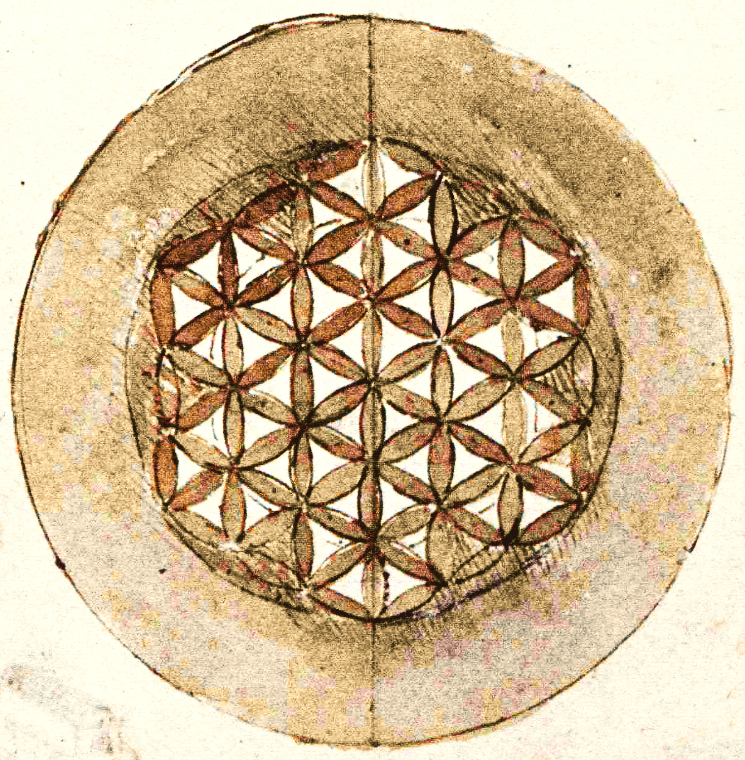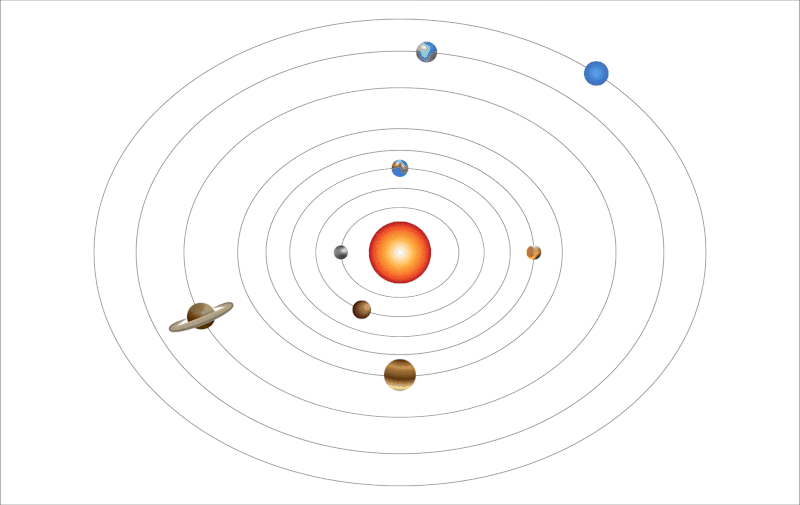God is a sphere with its center everywhere and its circumference nowhere. -Hermes Trismegistus
The Flower of Life


The Flower of Life is a geometric figure composed of multiple evenly-spaced, overlapping circles arranged in a flower-like pattern. It is often seen as a symbol of interconnectedness and the infinite nature of the universe.
The pattern’s ability to expand infinitely without a defined boundary mirrors the idea of a divine presence that is omnipresent and boundless, as described in the quote. Each circle in the Flower of Life can be seen as a center, representing the idea that the divine essence is present at every point, much like the concept of a center everywhere. The lack of a final boundary in the pattern aligns with the notion of a circumference nowhere, emphasizing the limitless and all-encompassing nature of the divine.
the seven days
On the First Day, from the vast silence of Beingness — the Zero — a Point of Light was born—a spark of existence against the void, the primal seed of all that is and will be.
On the Second Day, the First Rays of Light awakened, spiraling outward into the limitless reaches of Space. It stretched infinitely within, cradling the Zero at its heart, while infinitude unfolded beyond in radiant waves—a dance of inward stillness and endless expansion.
On the Third Day, the Light gazed upon itself. It traced the arc of awareness with the Compass of Time, encircling its boundless glow. Within this Unit Circle, the Self and the Not-Self were recognized—the first whisper of duality, the boundary of identity drawn.
On the Fourth Day, the One sought reflection, a Second Ray. It stretched to its own edge, and there, anchored a Second Unit Circle. Their meeting birthed the Vesica Piscis, the sacred Womb between worlds—a space where opposites unite.
On the Fifth Day, the Womb gave birth to form. From its sacred folds emerged the roots of form—the square roots of 2, 3, and 5, the rhythms of proportion and balance—a foundation for the shape of all things.
On the Sixth Day, a Third Ray created a Unit Sphere and five regular polyhedra took form. Shapes of perfect symmetry—the tetrahedron, the cube, the octahedron, the dodecahedron, the icosahedron—orbited the Central Point, enshrining Light within forms of cosmic elegance.
On the Seventh Day, the One rested and observed. All of creation turned, danced, expanded, a symphony of shape and space. The One gazed its reflection and saw that all was harmonious, all was whole. And so, in stillness, it celebrated the eternal geometry of its being.
The final week of Advent includes the seven days leading up to Christmas Eve. The “O Antiphons” are a beautiful and ancient tradition in the Western Christian liturgy. Each antiphon begins with “O” and is followed by a title for Christ, reflecting a different aspect of His role and significance.
- O Sapientia (O Wisdom) – Reflecting Christ as the wisdom of God.
- O Adonai (O Lord) – Acknowledging Christ as the leader of a spiritual community or the faithful who are in a covenant relationship with God..
- O Radix Jesse (O Root of Jesse) – Highlighting Christ’s lineage from Jesse, the father of King David.
- O Clavis David (O Key of David) – Emphasizing Christ’s authority to open the gates of Heaven.
- O Oriens (O Dayspring) – Celebrating Christ as the light rising in the East.
- O Rex Gentium (O King of the Nations) – Recognizing Christ as the king and desire of all nations.
- O Emmanuel (O God with Us) – Affirming Christ’s presence with humanity.
These antiphons are traditionally used in the Vespers service and are a way to prepare spiritually for the celebration of Christmas, each one building on the anticipation of Christ’s coming.
Note: King David is a multifaceted figure in biblical literature and carries several metaphorical meanings:
- Leadership and Kingship: David is often seen as the archetype of a just and righteous leader. He represents the ideal of a king who, despite his flaws, seeks to govern with wisdom and fairness, guided by a deep faith in God.
- Human Imperfection and Redemption: David’s life story includes both great triumphs and significant moral failures. Metaphorically, he represents the human condition—capable of both sin and redemption. His repentance and relationship with God highlight themes of forgiveness and divine grace.
- Faith and Devotion: Known for his psalms, David symbolizes deep spiritual devotion and a personal relationship with God. His life reflects the importance of faith, worship, and reliance on divine guidance.
- Messianic Foreshadowing: In Christian theology, David is often seen as a precursor to Jesus Christ, the “Son of David.” He represents the promise of a future messianic king who will establish an everlasting kingdom.
- Courage and Victory: David’s victory over Goliath is a powerful metaphor for overcoming seemingly insurmountable challenges through faith and courage. It symbolizes the triumph of the underdog and the power of divine support.
These metaphorical interpretations of King David highlight his enduring significance as a symbol of leadership, faith, and the complexities of the human experience.
Discover more from Agni Yoga
Subscribe to get the latest posts sent to your email.
